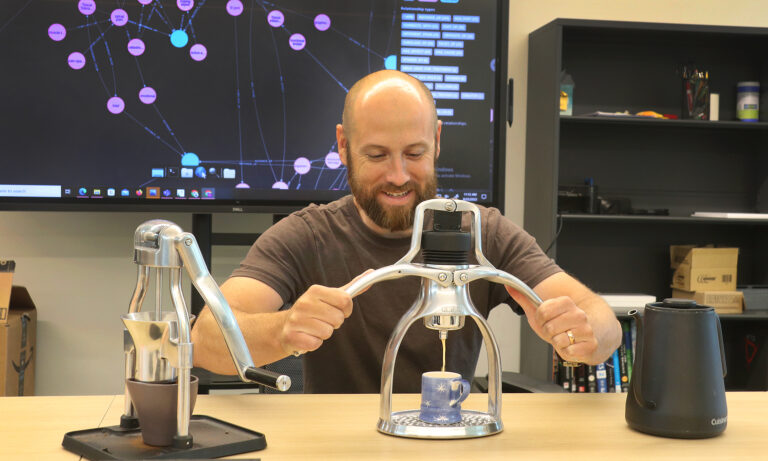Computer science Professor Paul Anderson has earned a prestigious Fulbright Scholar Award to conduct research in Spain, where he aims to harness artificial intelligence and global perspectives to transform the treatment of chronic pain.
The Fulbright U.S. Scholar Program offers over 400 awards in more than 135 countries, enabling U.S. citizens to carry out professional projects around the world. These awards foster international collaboration and promote mutual understanding between the United States and other countries.
Anderson will spend his winter quarter at the Universidad de Murcia, a leading research university in southeastern Spain. He plans to forge connections that will enable his National Institutes of Health consortium to conduct larger, more diverse studies and trials on low back pain.
“We must move beyond the confines of our country and its health-care system to address the global issue of chronic pain,” he said. “Do our narratives differ with varying health-care systems and languages, and how can we bridge these gaps for better patient outcomes?”
Anderson believes the solution lies in developing an AI-powered framework to improve diagnosis and care.
“There’s no blood test to diagnose chronic pain; it’s all based on the language patients use to describe their pain,” Anderson said. “AI can help us analyze and improve these language-based interactions, resulting in more personalized care and reduced disparities in treatment.”
Lost in Translation
Anderson’s primary focus is low back pain – a common global ailment often linked to opioid prescriptions.
Despite its prevalence, the condition remains challenging to diagnose accurately. Anderson cites the example of two spinal X-rays: one is straight, while the other is bent at odd angles. Surprisingly, the patient with the straight spine has chronic pain.
“This is the only scenario where the primary signal is what the patients are saying. The main source of information is the words coming out of their mouths, which can easily get lost in translation,” Anderson said.
“People across the world are seeking ways to deal with chronic pain, and we need a solution.”
Professor Paul Anderson
Compounding the issue is that the No. 1 complaint from patients is that their doctors aren’t listening to them, often because they simply don’t have time.
“This is where we can look at AI as a superpower, helping researchers identify patterns and data that doctors might miss. AI can process vast amounts of information quickly, providing valuable insights that lead to better diagnoses and treatment plans,” Anderson explained.
However, this information must be carefully vetted and curated to prevent reliance on pseudoscience. It’s also crucial to address bias in AI systems by including cultural, structural and social factors. Recognizing the vital role of diverse stakeholders – patients, clinicians, therapists and researchers – ensures that multiple voices are heard and respected within the framework.
“I can’t do this from a U.S. perspective alone,” Anderson said. “I have to physically go to Spain to collaborate with physicians and researchers about AI and chronic pain.”

Cross-Border Collaboration
Spain was a natural destination for Anderson, who wanted to study the effects of a socialized health-care system and the language used around chronic pain. Additionally, Spain ranks fourth in Europe in the adoption of generative AI.
Anderson’s bilingual journey began when his three kids joined Pacheco Elementary School, where students receive a dual education in Spanish and English.
“Witnessing their language immersion sparked my own language-learning journey,” said Anderson, noting his family will accompany him to Spain. “My family and I have practiced and worked together every day since they began school, which has transformed our bonds.”
This personal journey has led Anderson to explore how conversations about chronic pain are affected by language. In his initial interactions with colleagues and researchers from Spain, he has seen their dedication to pushing the boundaries of knowledge modeling, which involves structuring information to improve understanding and communication.
“The core of this project is to establish a long-term partnership with the Universidad de Murcia, enabling ongoing collaboration and exchanges,” he said.
He will bring back his findings to Cal Poly’s Computational Molecular Sciences lab and the Center for Applications in Biotechnology, where biological tools are developed and applied to address human concerns through collaborative research. The goal is to create a model that could be extended to different populations.
“People across the world are seeking ways to deal with chronic pain, and we need a solution,” Anderson said. “The alternative is to live with a huge problem.”
By Emily Slater


